Can Brexit lessons be learned from Scandinavian neighbours?
- Published
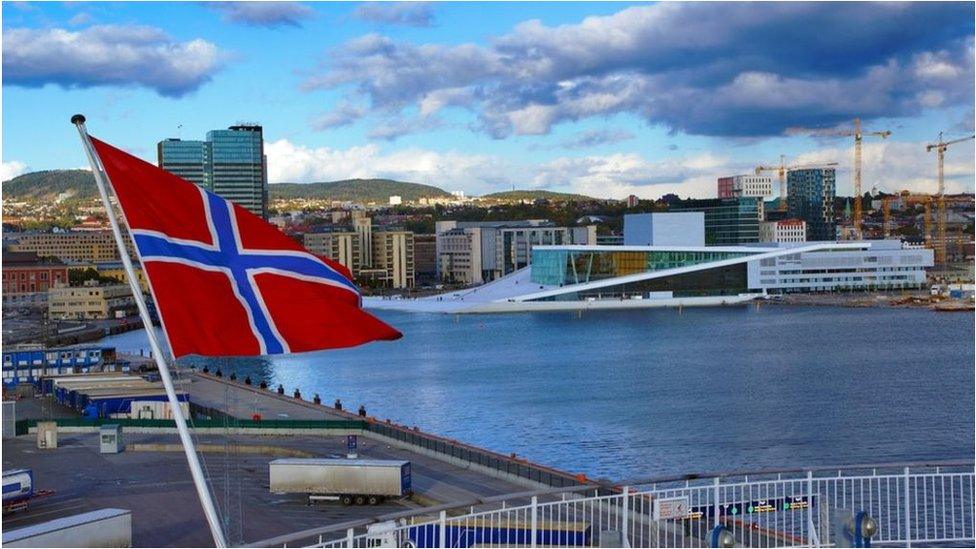
Norway is not a member of the EU or the customs union, but has access to the single market at a price
There has been a lot of talk about how the UK - Irish border might be affected by Brexit. Will it be hard or soft? Will there be customs posts if, as some suggest, the UK leaves the EU customs union?
BBC NI Dublin correspondent Shane Harrison has been to Norway, which is outside the EU, to see how it operates its border with Sweden.
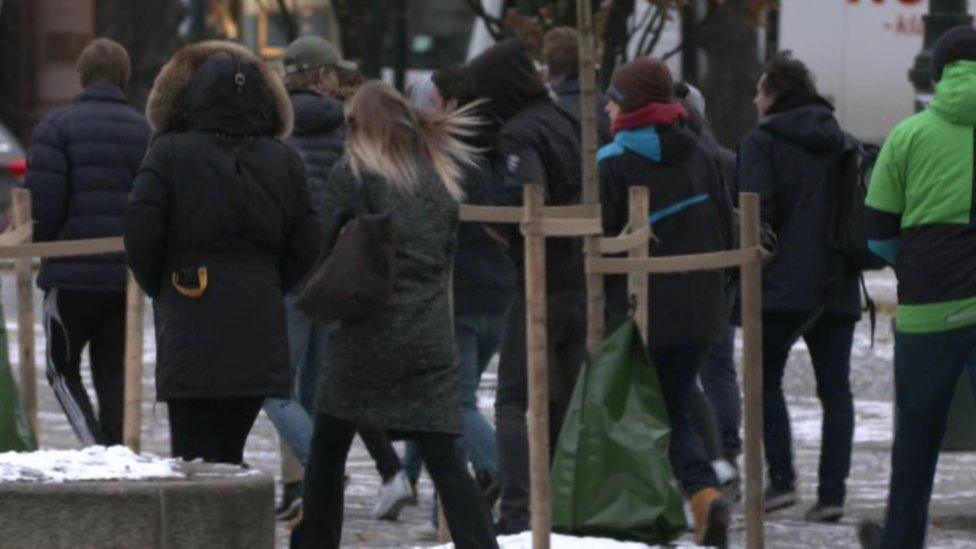
Commuters in Oslo
It's mid-morning in Oslo and the first snows of the winter are falling on the already frozen ground.
All around, Norwegians are well wrapped up and getting on with their lives.
A few miles away at his home overlooking a fjord in the suburbs, Phelim Rooney says he misses the banter and craic in Ireland, but loves the distinctive four seasons of the country he has called home for the last 40 years.
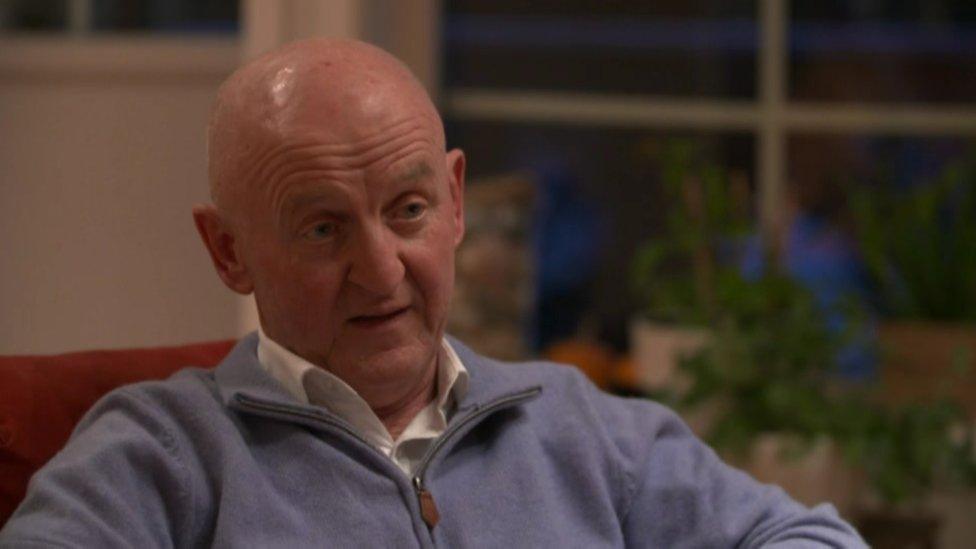
Phelim Rooney from County Leitrim who now lives in Norway prays that, because of Brexit, there will be no return to a hard border in his homeland.
A structural engineer working in the oil industry, he grew up in County Leitrim beside the border with Fermanagh and prays that, because of Brexit, there will be no return to a hard border in his homeland.
But like many in the city, he has been known to cross another border - that with Sweden and the European Union - to do some shopping.
"The price of everything is so much less down there," he said.
"People come back with as much alcohol, within the limits, that they can get in their car. Chicken and all sorts of meat are also a lot cheaper."
Accessing the single market
Norway is not a member of the EU or the customs union, but has access to the single market at a price - about €400m (£344m) a year - to take part in and fund different European programmes.
The country also has to accept all EU trading rules, except for agriculture and fisheries.
There is a 1,000 mile border between Norway and Sweden inside the EU.
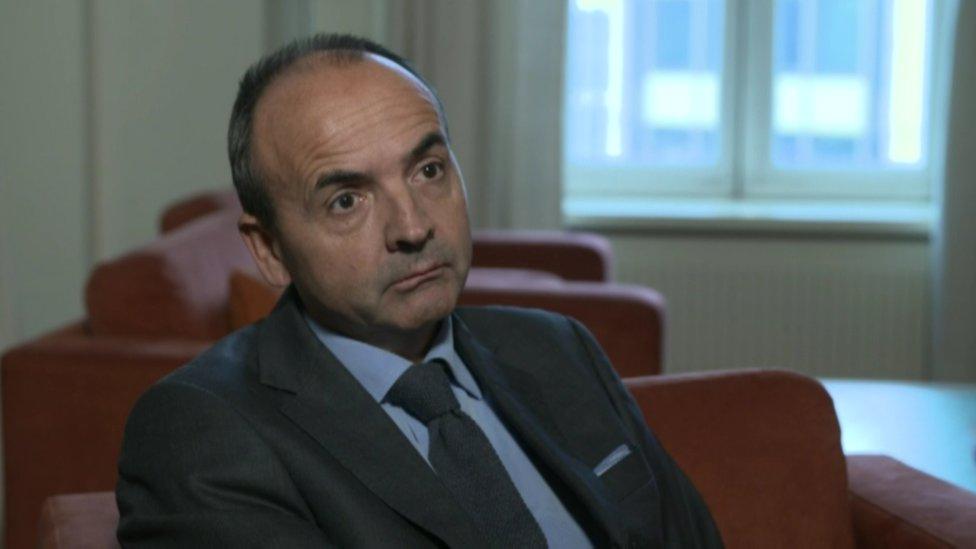
Niels Engelschion, the director general of European affairs in the Norwegian foreign ministry
Niels Engelschion, the director general of European affairs in the Norwegian foreign ministry, says trade between the two countries, nevertheless, flows very well.
"The transport volume every day is huge," he said.
"There are no huge constraints for trade between the two countries. Of course, you have to have all the papers. You have to have all the arrangements in place. But there's quite a functional arrangement between Norway and Sweden."
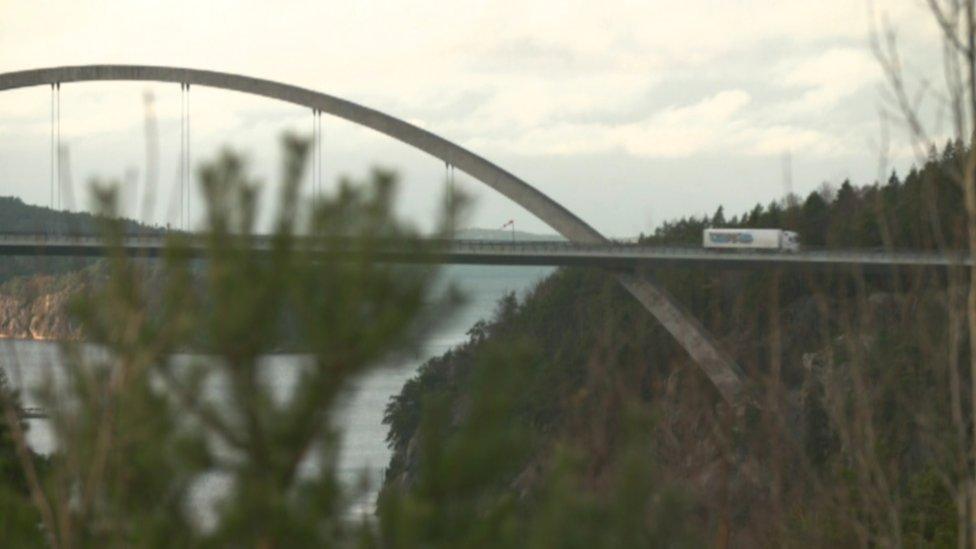
Svinesund bridge on the Oslo to Gothenberg motorway
There are about 70 border crossings between Norway and Sweden and the biggest is at Svinesund bridge on the Oslo to Gothenberg motorway.
Driving between the two countries, I was offered a choice of lane. If I took the green one, I was saying I had nothing to declare, while a red one suggested that I had something.
'Recommends the system'
Cars or lorries who break the rules can be heavily fined.
All trucks crossing between the two countries have to go to one of 17 one-stop shops on either side of the border to process their paper work. Eleven are in Norway.
Truck drivers from all over Europe go the main desk with their papers.
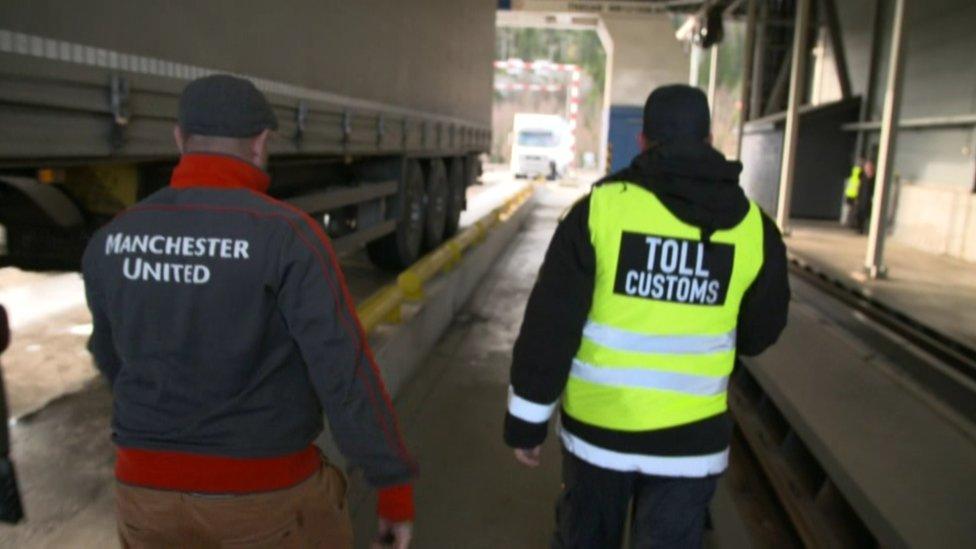
Lorry driver and customs officer at Svinesund
If everything is in order and there's no spot-check, the delay for the driver averages eight minutes, according to Kristen Hoiberget, the customs chief at Svinesund.
This is thanks, in part, to the use of electronic technology.
He says he would really recommend the system to the British and Irish authorities for post-Brexit.
"If you are able to find a good tone between the two countries you can save a lot of money on the bureaucracy and efficiency. And it would be very accommodating for the customers."
'One stop shop for businesses'
Carolen Carlsson on the Swedish side of the border agrees.
"It offers a one-stop shop for businesses that trade on both sides of the border. So, it basically saves time and money for businesses managing their trade between the two countries and the European Union," she said.
Automatic number plate recognition technology is used for intelligence purposes to suggest which vehicles should be stopped.
X-ray machines can also be deployed to examine whether what is actually on board, tallies with what is in the paperwork.
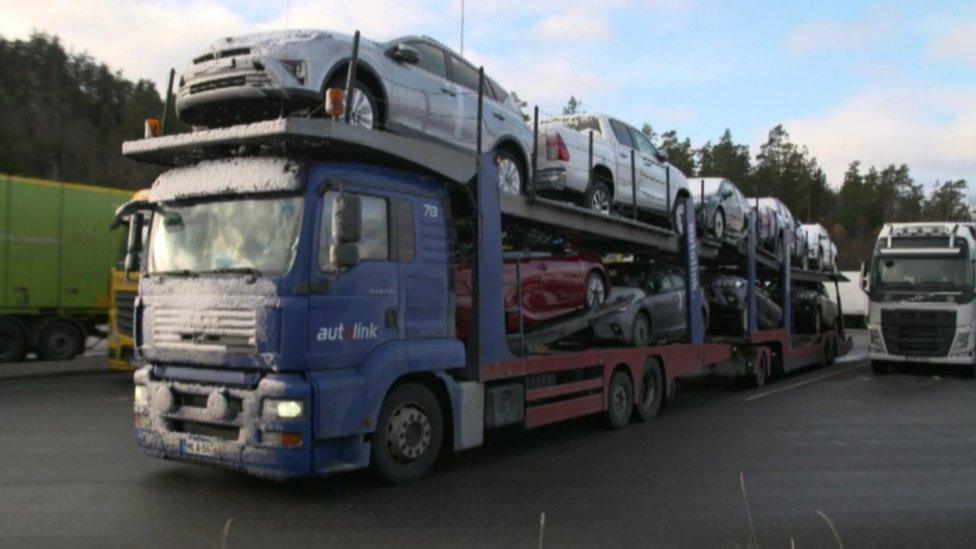
A lorry passes through the Norway-Sweden border
Delays can be little as half an hour for a driver like Robert Sitarczyk, from Poland, who was stopped with his cargo of car parts from France for Oslo.
"I've been stopped twice here. Everything is OK. The people are OK. I've been waiting here 20 to 30 minutes. I don't have tobacco or alcohol so I don't have a problem," he says.
"Is it achievable?"
Richard Milne, the Financial Times Nordic and Baltic correspondent, says the Norwegian-Swedish border is how both the UK and Irish governments would like their border to be, but adds there has to be some scepticism about the political realities.

Richard Milne, the Financial Times Nordic and Baltic correspondent
"The question for Britain and Ireland is," he says, "Is it achievable?
"Norway is inside the Single Market. Britain, at the moment, is not likely to be according to the mood music. That makes it harder to conceive how this might be at an Irish-British border. Yes, this is the model but let's see how practical it is to copy it."
So, uncertainty remains, but who knows what will happen on the border between the Republic of Ireland and Ireland, and the European Union and the United Kingdom.